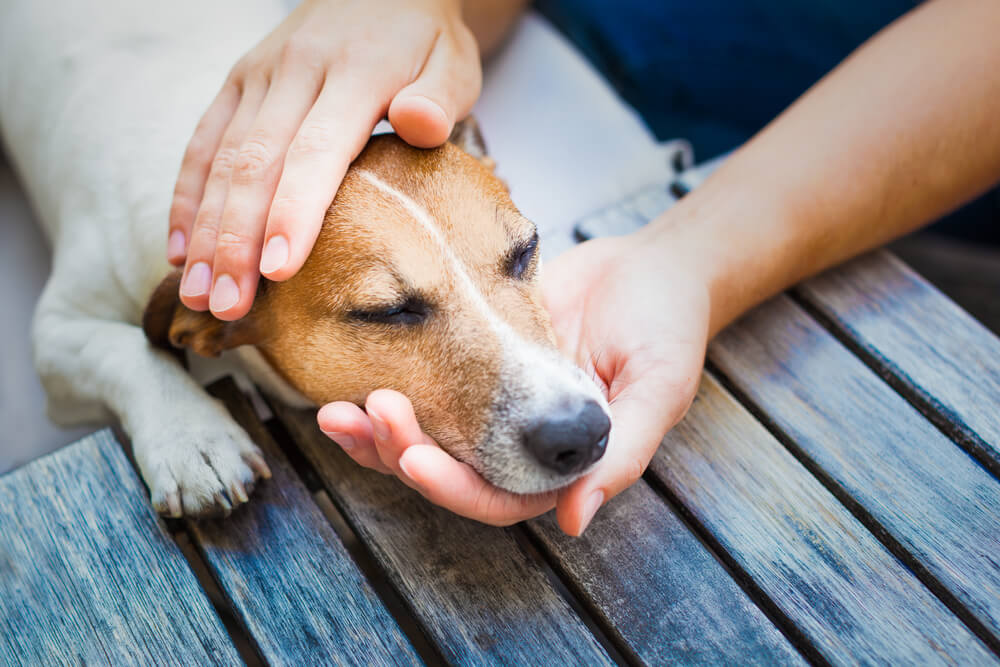News
Doggy first aid; how to help your dog in an emergency

One of the great joys in life is that we never really know what’s just around the corner. However, with the good also comes the bad. Like humans, animals sometimes have medical emergencies and as a responsible pet owner, you need to make sure you know what to do should these situations arise. Meatiful have put together the complete doggy first aid guide so that you can keep your pet safe no matter what life has to bring.
Choking
Choking is a medical emergency and one that needs to be dealt with quick-sharp. If you suspect your pup is choking on something, open his/her mouth (as long as you feel it’s safe to do so) and have a look inside to see if the object is easily retrievable. If it is, pull the object out with your fingers.
If the object is further back then you need to take a slightly different approach. If your pooch is a smaller breed, lift them up upside down, holding them firmly but gently by the hips. If your dog is a larger breed, lift his/her hind legs and wait for 10-15 seconds. The aim of this is for gravity to the job. But if this doesn’t work, try the Heimlich maneuver.
All dogs have a natural gap after their ribs, located at the top of the abdomen. Make a fist, with your thumb stuck out for stability and place your fist in this area, covering it with your other hand. Fish upwards towards their chest firmly and repeat this action five times. If the object doesn’t dislodge, call your vet and let them know it’s an emergency. It is probably worth calling the vet even if the object does dislodge as it may have caused some damage to your dog’s throat. Getting your pooch checked over will put your mind at ease.
CPR
Nobody likes to think about it, but if a dog is severely ill then he or she may stop breathing and you may not be able to find a pulse. If this is the case, performing CPR on your dog is necessary and could be the difference between life and death.
It is best to have two people to perform CPR on the dog. One person should be doing continuous chest compressions and the other should be giving your dog rescue breaths every 6-8 seconds. For large dogs, you should apply the compressions to the widest part of their chest, while your dog is lying on their side. For smaller dogs, you can locate the heart by bending his/her elbow: the heart is located just underneath where the point of the elbow is.
After two minutes, check for a pulse and be sure to switch positions if you’re feeling tired as applying chest compressions is very draining. If you’re struggling to revive your dog, call the vet immediately. If your dog comes around, it is still definitely worth taking them to see the local vet to decide what to do next based on your dog’s individual medical situation.
Wounds & cuts
If your dog has suffered a minor wound, you can deal with this at home. Apply water based lubricant (such as KY jelly) to the affected area, which will help with fur removal. Wipe your dog’s injury with a clean, warm cloth to remove any dirt or bacteria. Clean the wound with lukewarm water to remove debris and any blood that may be covering it and apply antiseptic to help prevent infection. Finally, apply antimicrobial ointment to the wound and try to distract your dog for ten minutes afterwards so they don’t scratch or lick the area. Repeat this process over the next couple of days and keep an eye out for any redness or swelling, which may indicate that the wound has become infected. If you do see any signs of infection, make sure you call your vet straight away.
More severe wounds (which are bleeding heavily or appear to need stitches) need to be dealt with by your vet. Apply pressure to the wounded area to stem the blood flow and elevate the affected area (if possible). Call your vet, let them know it’s an emergency and follow the instructions they give you as closely as you can. It’s important to remain calm and comfort your dog while this is going on as it will likely be a very stressful experience for them.
Toxins
Unfortunately, there are many household items/chemicals that can be quite toxic to pets. They can vary in their levels of severity but that doesn’t mean there’s nothing you can do if your dog ingests or is exposed to a harmful substance. Toxins or poisons can make your pooch quite ill; they can suffer from vomiting, diarrhea, convulsions, heart palpitations and more. Or they might just start acting a bit out of character or walking a bit strangely.
The first thing you want to do is make a note of the substance your dog has been exposed to, as well as the quantity they’ve drank/eaten. Take your dog outside and see if a whiff of fresh air helps with their symptoms. Don’t try to make your pet vomit unless you’ve been specifically advised to do so and offer them fresh water while you get on the phone to your local vet. Explain the situation and see what they advise to do next. It’s likely that your vet will want your dog to come in for some tests to make sure your pet is a-okay.
Have you ever experienced a medical emergency with your dog? Share your experience with us on social media!
